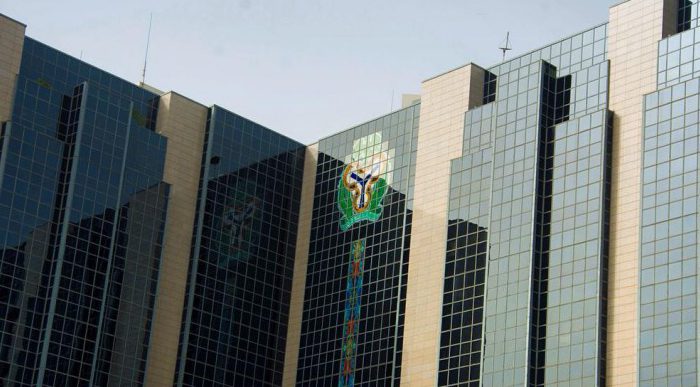Striking a balance: Unpacking Nigeria’s monetary policy dilemma
In the intricate dance of economic policy-making, every move carries weighty consequences. Yesterday’s decision by the Central Bank of Nigeria’s Monetary Policy Committee (CBN MPC) to hike interest rates, adjust asymmetric corridors, and raise the Cash Reserve Ratio reflects a nuanced response to the country’s economic challenges. However, the implications of these measures on households […]

In the intricate dance of economic policy-making, every move carries weighty consequences. Yesterday’s decision by the Central Bank of Nigeria’s Monetary Policy Committee (CBN MPC) to hike interest rates, adjust asymmetric corridors, and raise the Cash Reserve Ratio reflects a nuanced response to the country’s economic challenges. However, the implications of these measures on households and businesses, both in the short and long term, necessitate a deeper exploration through the lens of popular economic theories.
The decision to raise interest rates by a substantial 400 basis points to 22.75 per cent echoes the tenets of the Quantity Theory of Money, famously espoused by Economist Irving Fisher. According to this theory, there is a direct relationship between the quantity of money in an economy and the level of prices. With Nigeria grappling with stubbornly high inflation rates, soaring to 29.9 per cent as of January, the CBN’s move seeks to tighten monetary conditions, thereby curbing inflationary pressures. However, this comes at a cost, particularly for households and businesses.
Consider the plight of Mrs Adeola, a small business owner in Lagos. Her thriving bakery, which relies on a steady stream of customers and affordable financing, now faces a harsh reality. With interest rates climbing, the cost of borrowing to expand operations or purchase equipment becomes prohibitively expensive. This not only stifles Mrs Adeola’s growth aspirations but also trickles down to her customers, who may face higher prices for her goods as she seeks to offset rising production costs.
The impact reverberates beyond Mrs Adeola’s bakery, touching the lives of everyday Nigerians. For Mr Ibrahim, a civil servant in Abuja, the dream of homeownership feels increasingly out of reach. With mortgage rates climbing, the prospect of securing a loan to buy a house dims. This not only dampens consumer sentiment but also weighs on the broader housing market, where demand dwindles, and developers hesitate to break ground on new projects.
- Northern governors redeem monetary pledge to widows of slain policemen
- Forum launches W/Africa anti-coup policy
Yet, within the fabric of economic theory lies the notion of winners and losers. While higher interest rates pose challenges for borrowers, they also present opportunities for savers and investors. As Nobel laureate economist Milton Friedman famously argued, “Inflation is taxation without legislation.” For individuals like Mrs Okon, a retiree in Port Harcourt, higher interest rates offer a silver lining. Her pension savings, parked in fixed-income investments, now yield higher returns, providing a welcome buffer against the erosive effects of inflation.
Moreover, the adjustment of the asymmetric corridor around the Monetary Policy Rate (MPR) and the increase in the Cash Reserve Ratio reflect the CBN’s efforts to shore up financial stability and rein in excess liquidity. These measures draw parallels with the Liquidity Preference Theory, championed by Economist John Maynard Keynes. According to this theory, individuals and firms have a preference for holding cash rather than investing in long-term assets when uncertainty looms.
Indeed, the banking sector finds itself at the nexus of these policy shifts. As the Cash Reserve Ratio climbs to 45.0 per cent from 32.5 per cent, banks must allocate a larger share of deposits to reserve requirements, constraining their ability to lend. This tightens credit conditions, posing challenges for businesses seeking financing to fuel growth and innovation. However, proponents argue that such measures are essential for safeguarding financial stability and averting systemic risks.
In the long term, the efficacy of these monetary policy measures hinges on their ability to strike a delicate balance between inflation management, financial stability, and economic growth. As Economist Paul Samuelson famously quipped, “The art of economics consists in looking not merely at the immediate but at the longer effects of any act or policy; it consists in tracing the consequences of that policy not merely for one group but for all groups.”
In this vein, Nigeria must remain vigilant, adaptive, and forward-thinking in its approach to monetary policy. By embracing a diverse array of economic theories, from the Quantity Theory of Money to the Liquidity Preference Theory, policymakers can navigate the complex terrain of inflation, interest rates, and financial stability with precision and prudence.
As Nigeria charts its course forward, it must heed the timeless wisdom of Economist John Kenneth Galbraith: “Economic forecasting exists to make astrology look respectable.” In a world of uncertainty and complexity, the path to prosperity lies not in crystal-ball gazing but in the judicious application of economic principles, informed by empirical evidence and grounded in real-world dynamics.
Ultimately, Nigeria’s monetary policy dilemma embodies the inherent trade-offs and challenges of economic governance. Yet, it is through a thoughtful analysis, informed debate, and prudent policymaking that Nigeria can surmount these challenges and forge a path towards sustainable prosperity for all.
Aliyu, an economist, resides at
45 Ashiru Road, Unguwan Dosa New Extension, Kaduna.
